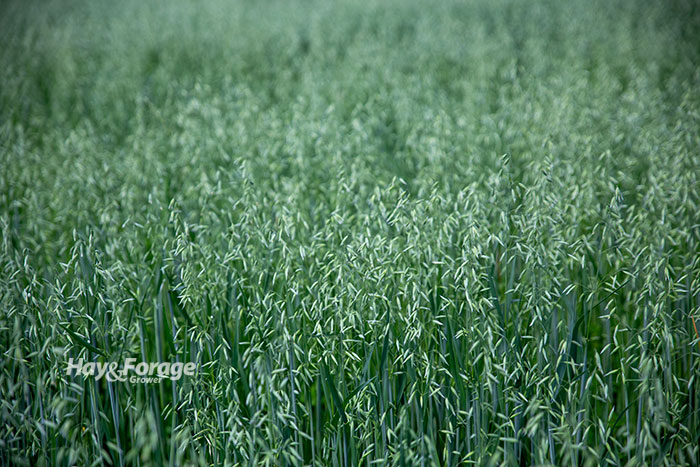
Whether dry conditions deter forage growth or rainfall shortens the harvest window, farmers may have a hay crop that is lower in yield or quality than they anticipated this year.
In Ohio, some farmers experienced an early summer drought before a shift to wet weather arrived shortly before the second cutting hay harvest. Jason Hartschuh and Allen Gahler, extension educators with The Ohio State University, say this precipitation pattern negatively impacted both forage yield and quality, leaving hay producers searching for solutions to bolster winter forage supplies.
In addition to growing warm-season annuals like sorghum and sorghum-sudangrass, planting oats can provide extra forage to help improve hay stocks. Although they are typically grown as a grain crop or early season forage, oats can perform well as a late-season forage, especially when planted during the first half of August.
In 2019, Hartschuh and Gahler conducted a study at the North Central Research Station in Sandusky County to analyze forage yield and quality when oats were planted between July 15 and early September. The extension educators also experimented with nitrogen fertilizer rates and examined the benefits of using foliar fungicide to control oat crown rust.
“Usually, the best scenario for growing oats for forage is to plant them into wheat stubble, which is normally available by mid-July at the latest; however, the typical recommendation is to plant oats between August 1 and 10 to maximize tonnage and quality since shorter day length triggers oats to grow more leaf instead of producing seed,” they state.
In the study, forage yields improved across the board when oats received 46 pounds of nitrogen per acre. Results varied when the application rate was raised to 92 pounds per acre; however, the extension educators concluded oats had the best nitrogen use efficiency at this application rate among all planting dates over four years. With that said, they recommend applying approximately 50 pounds of nitrogen per acre at planting for the best economic returns.
Even with nitrogen fertilization, planting oats later in the year might limit forage yield as plants have less time to grow. For example, oats planted on September 1 had the lowest yields in the study, even when nitrogen was applied at 46, 92, and 138 pounds per acre. The latter treatment did boost forage yields to 0.7 tons per acre, but these oats did not mature to flowering stages like the earlier planted crops.
“When planted in early September, yields fall to an average of 0.5 tons per acre, making it less economical to mechanically harvest them as stored forage and more economical to graze,” the extension educators suggest. Overall, aim to plant oats for hay sooner than later to maximize forage yield and input costs.
"oat" - Google News
August 01, 2023 at 09:41PM
https://ift.tt/8Id0BzQ
Oats have hay potential | Hay and Forage Magazine - Hay & Forage Grower
"oat" - Google News
https://ift.tt/vGi8FH3
https://ift.tt/dVEzt6k
Bagikan Berita Ini














0 Response to "Oats have hay potential | Hay and Forage Magazine - Hay & Forage Grower"
Post a Comment